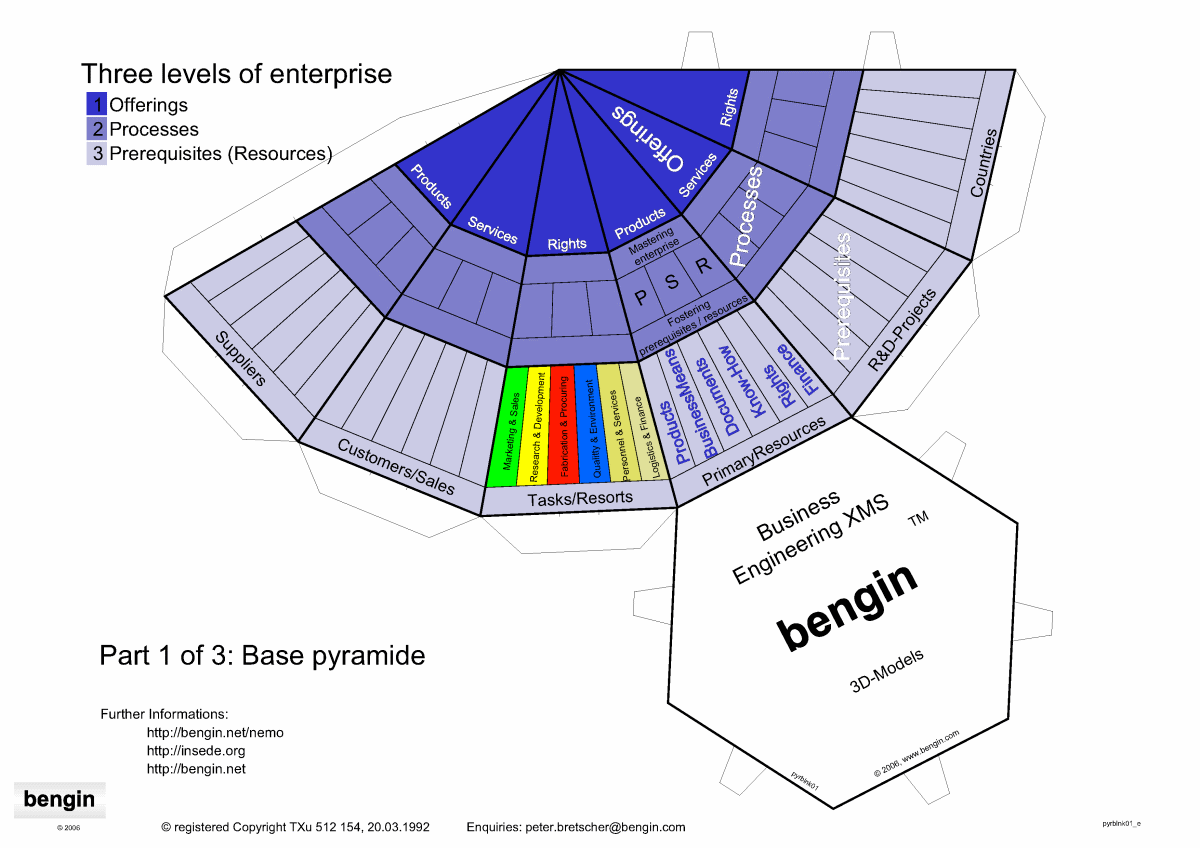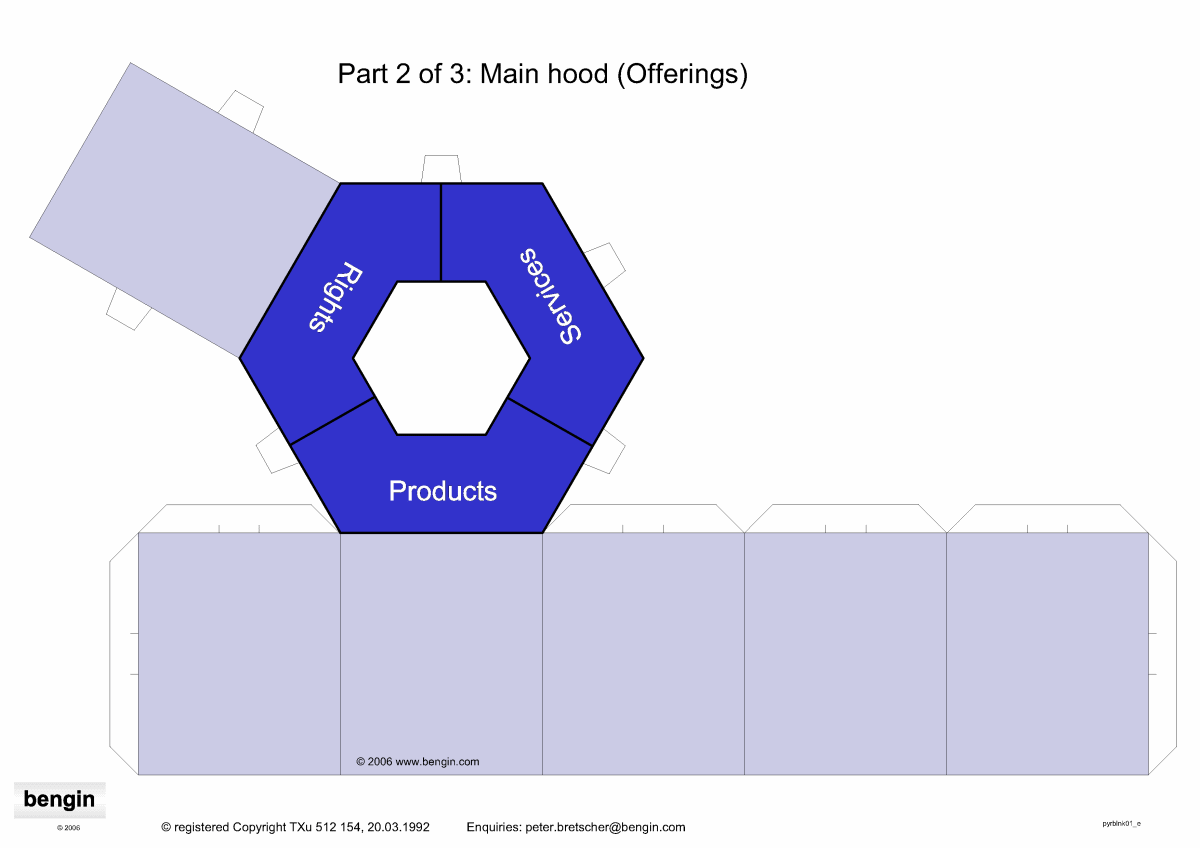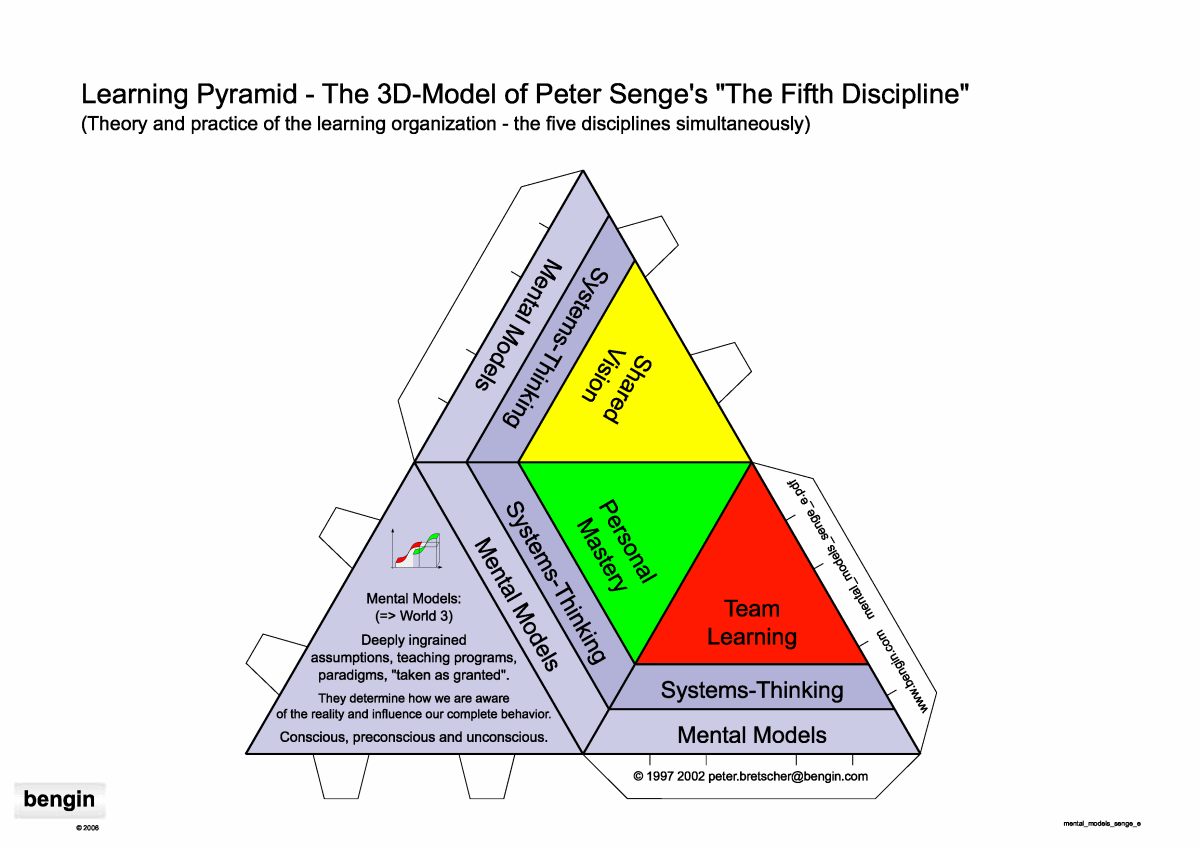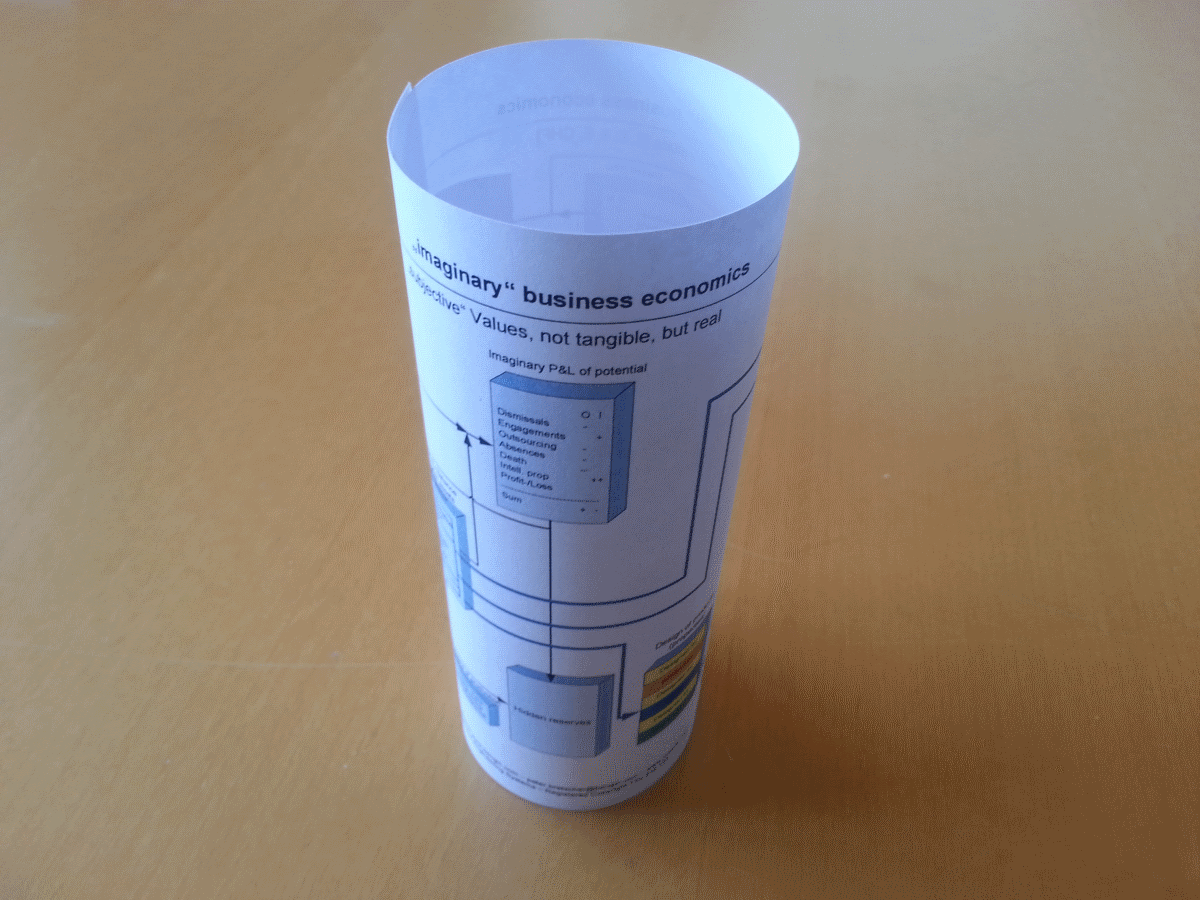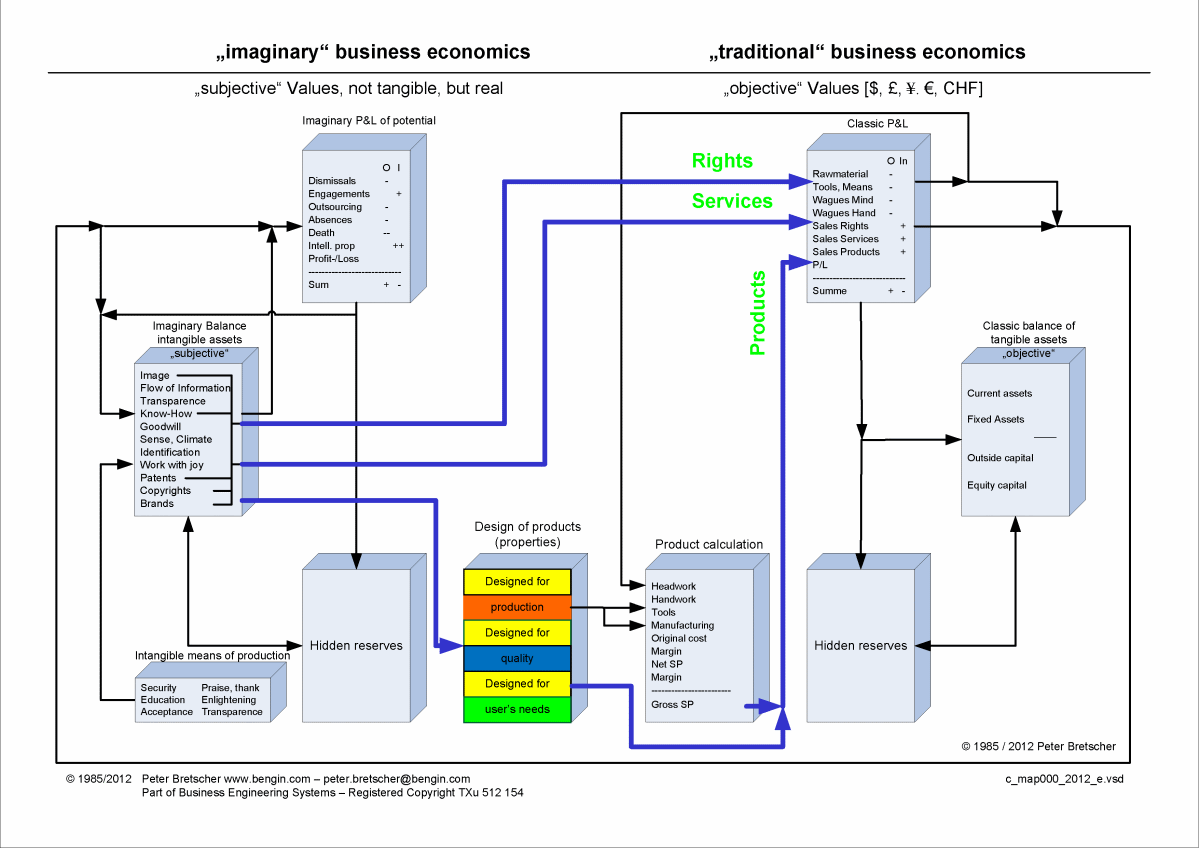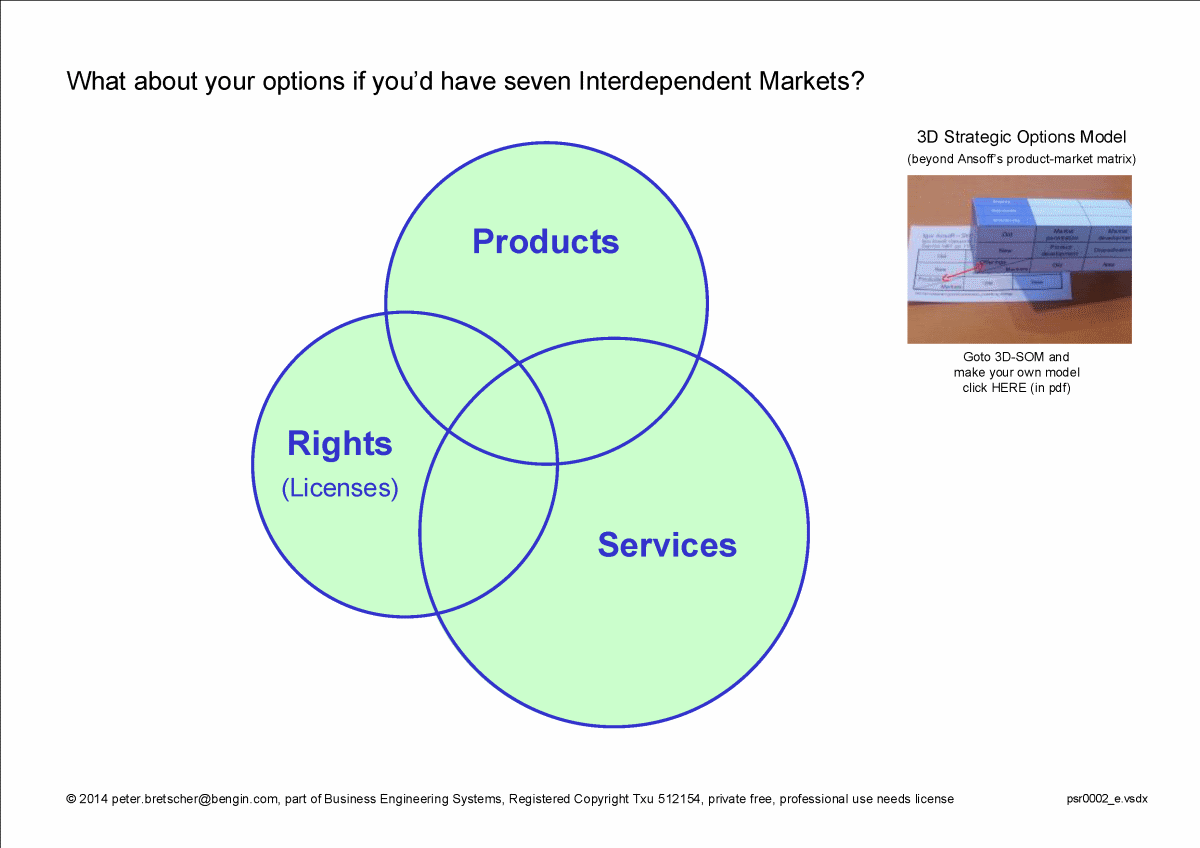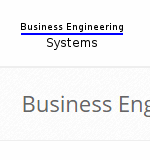Notes to 3D economic models
Note: 3D models come nearer to the real world than 2D or even linear models.
You'll gain more inspirations and options about how to make your strategy and can show and explain more clearly to your peers and subordinates what's the problem and what has to be solved.... and show them the senses beyond the work.
If you like individualized models (flat or real 3D) for your work as entrepreneur, manager, consultant, educator...
or for your students or clients just send me a mail.
3D Enterprise Model (English, German)
(Link downloads pdf of all three parts in English)
The enterprise model of Business Engineering Systems is a pyramid with three levels.
1. The top level is the level for the offerings (Products, Services, Licenses/Rights)
2. The medium level is for the processes (Managing the enterprise; running the operations to invent, develop and (re)produce the offerings mentioned above; maintaining the organization and the prerequisites.
3. The lowest level is for the (Primary)Resources, the functional departments (Marketing, Techniques/Technologies (R&D), Fabrication/Production/Assembling, Quality & Environment, People (HR), Logistics & Finance) and other dimensions.
The pdf contains three sheets for the pyramid and two hoods for the process level (hides the prerequisites) and the offerings level (hides the process level too).
Print it to a heavy paper. Cut, fold and glue the figures.
Classic enterprise models don't show the prerequisites in context with the processes.
The result is often the loss of integrating the existing resources and its economic potential into the strategic reflections.
Even if strategic thinking mostly starts from "Market" - this is only one (main stream supported) side of the coin.
Entrepreneurs are aware of their assets and economic potential - and they integrate it wisely into their strategy.
Or the other way around.
If anyone starts strategic questions and options from the resource based view he/she can improve the overall performance of the enterprise at least 20%.
Same pyramid in German
Die gleiche Pyramide in Deutsch.
Scientific models (English, German)
Scientific models and perspectives. Scientific models have three levels too.
They start with basic "Mental Models" (=> World 3, abstract Virtual Reality). Deeply ingrained assumptions, teaching programs, "taken as granted". They determine how we are aware of the reality and influence our coplete behavior. Conscious, preconscious and unconscious.
Upon this basics of a science (includes its limits) there is the "Rational Reasoning Filter". Any science has to be rational. If not - it is excluded from the science community.
Based on this two levels are the "scientific special areas" with specific explanation models, recipes, norms...
99% of progress in any science is in the upper level. It's somehow like "debugging" a software application. This is about iterative progress in any scientific field.
Another approach for scientific progress is to broaden the basic MindSet (paradigm). Sometimes it is the only way to find a solution - especially when the base of a theory was set for another environment than it is used now. As for example in economics.
Same model in German.
Das gleiche Modell in Deutsch.
Organizational learning (Senge, English, German)
Peter M. Senge emerged in the 1990s as a major figure in organizational development with his book The Fifth Discipline where he developed the notion of a learning organization. This views organizations as dynamical systems (as defined in Systemics) in a state of continuous adaptation and improvement.
The Fife Disciplines are (1) "Personal Mastery", (2) "Mental Models", (3) "Shared Vison", (4) "Team learning" and (5) "Systems Thinking".
Links to Wikipedia about Senge here and The Fifth Discipline here
The model shows all these fife on four sides. And it shows, that the most important "Discipline" is the "Mental Model". "Mental Model" is not only meant as that from an individual, but from a scientific framework - say economics - as the mental operating system of "how to explain" real economy.
If "Organizational Learning" should have a sustainable impact: Start with enhancing "Mental Models". Crack the limits of classic economic thinking, integrate intangible assets (Knowledge and its potential) and a subjective valuation metric as the main component to wealth and welfare of employees and customers.
Same model in German.
Das gleiche Modell in Deutsch.
"Imaginary" economics (English, German)
Imagine that an "Imaginary Balance of Intangible Assets" and an "Imaginary Profit and Loss Statement of Potential" really exists because you invested in it.
Would it not be logical and wiser to use this potential for the improvement of the income directly instead of removing it and to lay people off in order to cut costs?
This framework helps to discover your existing hidden assets an shows ways for better using it.
Either on the tube or on the flat map - if you have some flat-thinkers around you.
For strategic inspirations go to the "3D Strategic Options Model" below.
Or want to have same model in German?
Das gleiche Modell in Deutsch.
Want to have the insights and inspirations on a "flat map" or on YouTube?
Then follow this link
3D Strategic Options Model (English, German)
Almost 50 years ago, Igor Ansoff published his "Strategies for Diversification", HBR 1957, (link to wikipedia).
The people and enterprises were product-oriented (tangible products). Toyota started with exporting vehicles to the U.S. and the Soviet Union launched Sputnik 2, with the first animal to orbit the Earth (a dog named Laika) on board.
Since those years, the products have become more exchangeable and intelligent. The people need more services and the Intellectual Property Rights are becoming increasingly important in the development, production and trade of smarter products.
Because so much has changed, it was appropriate to revise the old flat mantra and to develop the new 3D Strategic Options Model.
The main difference is that the product orientation was replaced by the offer orientation. In the new model, then the offer consists of a mix of products, services and rights (licenses) in any combination. This extension gives the entrepreneurs much more freedom in designing their strategy and business model. It is interesting that such strategic extensions usually cost little and improve the income very rapidly.
Or want to have same model in German?
Das gleiche Modell in Deutsch.
Write if you'd like Visio format.


